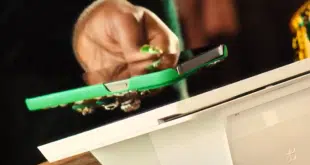Those missing account numbers or little typos consumers make when paying bills can cost billers and others in the payments chain big bucks to fix. A recent study for automated clearing house governing body NACHA pegs the annual cost of such exception processing at about $720 million. More bad news: the rate of erroneous transactions coming through so-called aggregators, such as banks or bank service providers, while low, is increasing.
“I think it’s a black eye on the industry, that we can’t do a better job here,” says Rob Unger, a senior director at Herndon, Va.-based NACHA who heads the association’s Council for Electronic Billing and Payment.
In the study, Blueflame Consulting LLC examined bill-payment exceptions across a variety of payment channels, including paper, ACH, cards, and other electronic means.
The study estimates the exception rate across all channels at 0.58%. Some 130 million transactions last year needed exception processing at an average cost of $5.58 per item.
Blueflame found that 0.51% of bill payments coming through banks and service providers could not be posted because they needed exception processing due to errors. A similar study in 2007 pegged the bank/aggregator exception rate at 0.4%.
A major cause of errors across all channels is incorrect account numbers entered by the consumer, according to the study. For billers, account-number problems are the leading cause of exceptions and for processors they’re No. 2, after processing differences.
But rather than stopping a bill-pay transaction coming through the bank channel that contains an account-number error, billers frequently accept it and then they or processors attempt to fix it. “As much as billers complain, they still want that payment,” says Unger.
Incorrect account numbers often get through because many billers don’t provide to aggregators the so-called account masks, or internal logic, for their account-numbering systems. It’s easier for billers to resolve such errors when consumers pay online through biller-direct sites because the masks are at hand and the online system can prompt the payer to re-enter the number.
In bank online bill-pay, only 43% of the billers surveyed required banks to use specific account formats or editing. Sharing such account-formatting logic “can go a long way in reducing errors,” says Unger. In fact, the exception rate in such instances is only 0.29%. Users of NACHA’s EBIDS online bill-pay system are required to provide account masks. EBIDS had 19 million transactions last year.
The resolution process for an erroneous transaction through a bank site can involve contacting the consumer, attempting to edit the transaction, or even cutting a paper check to the biller, a process that contradicts the intent of electronic bill pay.
“It’s a very manual process,” says Unger. Typically, an aggregator will keep submitting a bad number, or it will translate a bad number into a good one. Or it will send so-called “scrub files” to billers that say, “‘replace bad numbers with these updated good numbers,’” he says. Billers absorb most of the resolution costs, though aggregators may pick up some.
Related solutions to the problem, according to NACHA, include developing directories or shared databases to verify account numbers, structures, and billing/remittance details; enhancing communications among billers, banks, and processors, especially for resolving exceptions; and increasing the options to correct or validate account numbers by sharing scrub files or master account files.
How quickly preventative measures will take hold is unclear. “In the wide-open industry there are no rules; there are agreements, but there no rules,” says Unger. “It really is a sausage factory out there.”
Blueflame’s 2011 study included data from 47 billers and 24 financial institutions and processors.





